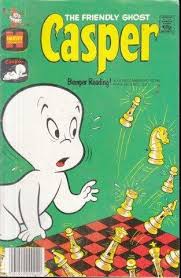
The History Of Computer Chess: Turochamp
In the second instalment of my series on the pivotal moments in computer chess history, we move on from the Automata of the Enlightenment era to the first chess computers of the early 20th century, a comparatively different world in which modern scientific pioneers built their own 'Mechanical Turk'. As early as 1912, Spanish civil engineer and mathematician Leonardo Torres y Quevado began to construct his 'El Ajedrecista' (which translates as 'The Chessplayer'), a mechanical prototype that was programmed to automatically play a King and Rook endgame against King from any given position. During El Ajedrecista's first public demonstration to great fanfare at the University of Paris 1914, mechanical arms were employed to moves the pieces; by 1920, the device was upgraded to include electromagnets under the board, giving the appearance of a game between two ghosts!

One of the first autonomous machines capable of playing chess, 'El Ajedrecista' could consistently deliver checkmate by process of a simple algorithm. However, it would not necessarily do so in the minimum number of moves, nor did it adhere to the 50 move rule. But as long as there were three pieces on the board, with white's king and rook assigned to the machine against black's king, it could eventually give mate in every single given position. Any attempts to trick the machine, like playing an illegal move, would fall at the first hurdle; illegal moves and positions were flagged and signalled by means of a light bulb. Checkmate was ceremoniously declared by means of a sound effect, a voice recording and speaker that announced “jaque mate!”.

Probably an algorithm rather than a code, Turochamp was arguably the first historical computer chess program. Turochamp is named after the famous British mathematician and computer scientist Alan Turing (1912-1954), who is remembered primarily for his pioneering contributions to theoretical computer science, paving the way to the creation and development of the modern computers, tablets and smartphones that we use in our daily lives today.
Developed in 1948 alongside his colleague Prof. David Gawen Champerowne at King's College in Cambridge, Turochamp was named after the pair, a combination of their surnames. In the summer of 1952, Turing played a match against his colleague Alick Glennie, a British computer specialist. The match, which was recorded, had the Turochamp program losing to Glennie in 29 moves.

For lack of a traditional computer, the program was operated by pencil and paper. Moves were calculated manually by hand, with each turn taking around half an hour each to complete. By calculating all potential moves and all of the potential player moves in response, assigning point values to each game state, and selecting the move with the highest average possible point value, the Turochamp could play an entire game against a human opponent, albeit at a low standard of play.

Champernowne (who's wife Wilhelmina was the first opponent to play a test game versus Turochamp), explains: "Most of our attention went to deciding which moves were to be followed up. ...Captures had to be followed up at least to the point where no further captures was immediately possible. Check and forcing moves had to be followed further. We were particularly keen on the idea that whereas certain moves would be scorned as pointless and pursued no further others would be followed quite a long way down certain paths. In the actual experiment I suspect we were a bit slapdash about all this and must have made a number of slips since the arithmetic was extremely tedious with pencil and paper. Our general conclusion was that a computer should be fairly easy to programme to play a game of chess against a beginner and stand a fair chance of winning or least reaching a winning position." (Copeland, 2004)

Although the original algorithm has since been lost, it was reconstructed by Ken Thompson and Mathias Feist in 2000. Although Turing began working on implementing Turochamp to computer, the Ferrenti Mark 1, in 1950, his work was not finished due to his tragic and untimely death in 1954. The reconstruction of the algorithm and digitalisation in 2000 was faithful in that the program still works by calculating just two moves ahead, a far cry for the beasts of machines that were available in the same year, such as IBM's Deep Blue. The engine has since been released to the general public, and is available to download via ChessBase for use as a sparring partner in Fritz, Rykba or other chess engine programs; an interesting (albeit weak) addition to your digital collection.
Turochamp (Reconstructed) would later take part in a match against one of the greatest chess players of all time: Kasparov!

Attending the 2012 Alan Turing Centenary Conference at the University of Manchester, United Kingdom, Kasparov took on this 60-year old chess program in a public match, beating the now-digital device in a mere 16 moves. But Kasparov was favourable to the machine and its maker, saying, "It was an outstanding accomplishment... Alan Turing is one of the very few people about who you could say that if he had lived longer the world would be a different place."

